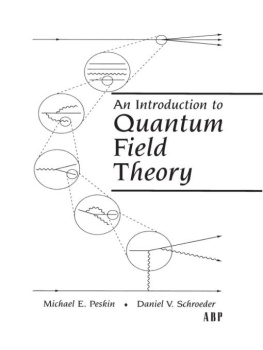David Park - Introduction to the Quantum Theory
Here you can read online David Park - Introduction to the Quantum Theory full text of the book (entire story) in english for free. Download pdf and epub, get meaning, cover and reviews about this ebook. year: 2005, publisher: Dover Publications, genre: Children. Description of the work, (preface) as well as reviews are available. Best literature library LitArk.com created for fans of good reading and offers a wide selection of genres:
Romance novel
Science fiction
Adventure
Detective
Science
History
Home and family
Prose
Art
Politics
Computer
Non-fiction
Religion
Business
Children
Humor
Choose a favorite category and find really read worthwhile books. Enjoy immersion in the world of imagination, feel the emotions of the characters or learn something new for yourself, make an fascinating discovery.

- Book:Introduction to the Quantum Theory
- Author:
- Publisher:Dover Publications
- Genre:
- Year:2005
- Rating:3 / 5
- Favourites:Add to favourites
- Your mark:
- 60
- 1
- 2
- 3
- 4
- 5
Introduction to the Quantum Theory: summary, description and annotation
We offer to read an annotation, description, summary or preface (depends on what the author of the book "Introduction to the Quantum Theory" wrote himself). If you haven't found the necessary information about the book — write in the comments, we will try to find it.
Introduction to the Quantum Theory — read online for free the complete book (whole text) full work
Below is the text of the book, divided by pages. System saving the place of the last page read, allows you to conveniently read the book "Introduction to the Quantum Theory" online for free, without having to search again every time where you left off. Put a bookmark, and you can go to the page where you finished reading at any time.
Font size:
Interval:
Bookmark:
David Park
Emeritus Professor of Physics
Williams College
Dover Publications, Inc.
Mineola, New York
Copyright
Copyright 1964, 1974, 1992 by David Park
All rights reserved.
Bibliographical Note
This Dover edition, first published in 2005, is an unabridged republication of the third edition, published by McGraw-Hill, New York, 1992. The first edition was published by McGraw-Hill in 1964.
Library of Congress Cataloging-in-Publication Data
Park, David Allen, 1919
Introduction to the quantum theory / David Park.3rd ed.
p. cm.
This Dover edition, first published in 2005, is an unabridged republication of the third edition, published by McGraw-Hill, New York, 1992. The first edition was published by McGraw-Hill in 1964.
Includes bibliographical references and index.
ISBN 0-486-44137-7 (pbk.)
1. Quantum theory. I. Title.
QC174.12.P37 2005
530.12dc22
2005045174
Manufactured in the United States of America
Dover Publications, Inc., 31 East 2nd Street, Mineola, N.Y. 11501
 3.5 Indeterminacy Relations
3.5 Indeterminacy Relations
 7.3 First-Order Perturbations
7.3 First-Order Perturbations
11.5 Photoelectric Effect
17 The Helium Atom
2 Fourier Integrals and Completeness Relations
 Sections considered necessary for a basic understanding
Sections considered necessary for a basic understanding
 Material that would not ordinarily be covered in an introductory course
Material that would not ordinarily be covered in an introductory course
This is a first course in quantum mechanics, but students will find it easier if they have had some exposure to experimental facts and basic quantum-mechanical terminology, at the modern physics level, before they start it. Otherwise it is fairly self-contained, with covering mathematical topics and the essentials of electromagnetic theory to help make it so.
For flexibility of use, the book is divided in two parts: the first on basic theory and the second on selected applications. There is no intention that are supposed to show what one actually does with the theory, how the numbers come out, and what they have to do with experiment.
In teaching from a book of this length there is always the question of what to omit. To facilitate the choice, sections of that contain the essential physical argument are marked with  , but I think that a course covering only this material would be a pretty dull one. At the other extreme, there are a few sections marked with o that would not be covered in a conventional course and are included essentially for fun.
, but I think that a course covering only this material would be a pretty dull one. At the other extreme, there are a few sections marked with o that would not be covered in a conventional course and are included essentially for fun.
The text contains many problems in which steps of the proofs and related ideas are explored. They vary in difficulty; some are trivial while a few others point toward voyages of discovery. Some are numerical, and students should be able to do them. A few use a computer. gives a simple program for integrating a second-order differential equation.
The units are SI, with the exception that e2/40 is usually abbreviated e2. It makes quicker writing in most situations, and if one needs to calculate a transition probability or a susceptibility one can easily reinstate the e.
This edition omits two chapters that were in the old ones, those on thermodynamics and statistical mechanics, since there are now several good introductory texts to choose from. It also adds two chapters. most working physicists took a rather dismissive view of these questions, assuming that as science progressed they would all disappear or become irrelevant. Neither of these has happened. Instead, experimental techniques have already progressed to the stage where people are experimenting with a few atoms, or one at a time, and measuring effects in which only one or two quanta are exchanged with the measuring apparatus. This means that the old Copenhagen interpretation, which described the apparatus classically, is no longer adequate, and new explanatory structures must be set up. Since there are also well-known phenomena that manifest quantum nonseparability on the macroscopic scale, it seemed appropriate to put in a chapter which, if it does not answer any of the deep methodological questions that arise, at least discusses them.
, Classical Dynamics and Feynmans Construction, is also new. It seemed to be required because this method is used in an essential way in so much of modern theory. The chapter is self-contained and can be omitted without loss of continuity.
I must thank my colleagues in the Physics Department at Williams College for answering questions that must have seemed naive, and for providing, year after year, an atmosphere of friendly cooperation.
McGraw-Hill and I would like to thank the following reviewers for their many helpful comments and suggestions: Glenn Agnolet, Texas A&M University; Karamjeet Arya, San Jose State University; Bill Dalton, St. Cloud State University; Michael Grady, SUNY, Fredonia; Richard Hazeltine, University of Texas; and Jack Mochel, University of Illinois, Urbana-Champaign.
David Park
I should try to make clear at the outset what is entailed in learning this subject. It is not merely learning some new physics. It is much more learning to look at old physics in a new and better wayit sounds new because the ordinary vocabulary of science and everyday life is not well adapted to the uses of quantum theory, and it is better because the new theory is in agreement with experiment over a far wider range of phenomena than the old one. It gets its results by reasoning which sometimes cannot be explained in classical terms, but this does not mean that it renders the classical theory wrong or obsolete. It concerns itself largely with questions to which classical thinking cannot be applied, but the latter has, it seems, a permanent place in physics because it deals in a natural way with phenomena that ordinarily present themselves to the human senses. There exists, therefore, a very special relationship between quantum mechanics and newtonian physics, and it will be noticed that all the final results of calculations in the new theory are expressed in the language of the old. It is thus in the calculation of physical results that one makes the closest contact with what is familiar, and that is why this book offers a variety of worked-out examples of the theorys application in . Most readers will probably learn more from this part than from the first.
A word of advice. Do not ignore the problems in reading the text; they are in many cases designed to call attention to matters you may not have noticed. Most of the book is designed to be read with a pencil and paper, and you are not supposed to be able to master it otherwise. Steps are omitted from some of the proofs and some of the calculations are curtailed, not because I am lazy, but in order to encourage you to participate. Such gaps are very narrow in the beginning and become wider toward the end. None is very wide; if it appears so, you are probably off the track.
A final word. This is a physical theory, constructed out of concrete physical ideas. It is expressed mathematically because that is the way to express this kind of thinking. Everything possible has been done to make this book easy mathematically; things I have been unable to simplify I have omitted. If, therefore, you have trouble at any point, try to see whether the difficulty is in physics or in mathematics. That usually works.
Font size:
Interval:
Bookmark:
Similar books «Introduction to the Quantum Theory»
Look at similar books to Introduction to the Quantum Theory. We have selected literature similar in name and meaning in the hope of providing readers with more options to find new, interesting, not yet read works.
Discussion, reviews of the book Introduction to the Quantum Theory and just readers' own opinions. Leave your comments, write what you think about the work, its meaning or the main characters. Specify what exactly you liked and what you didn't like, and why you think so.

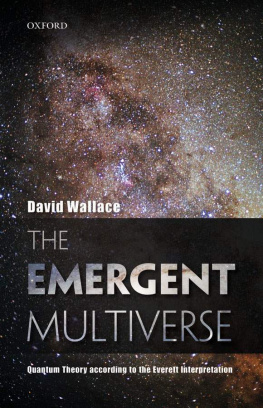
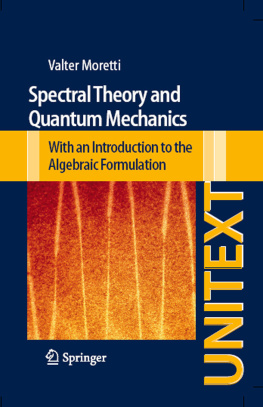
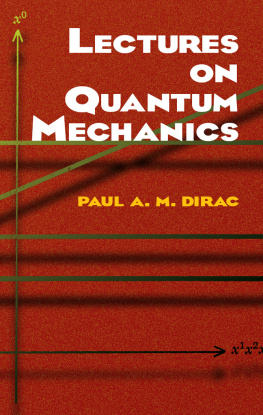
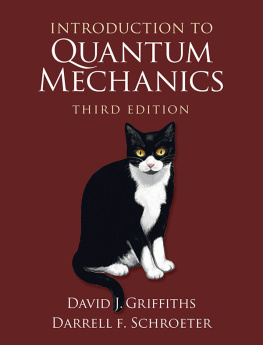

![David Orrell [David Orrell] - Quantum Economics](/uploads/posts/book/114631/thumbs/david-orrell-david-orrell-quantum-economics.jpg)
